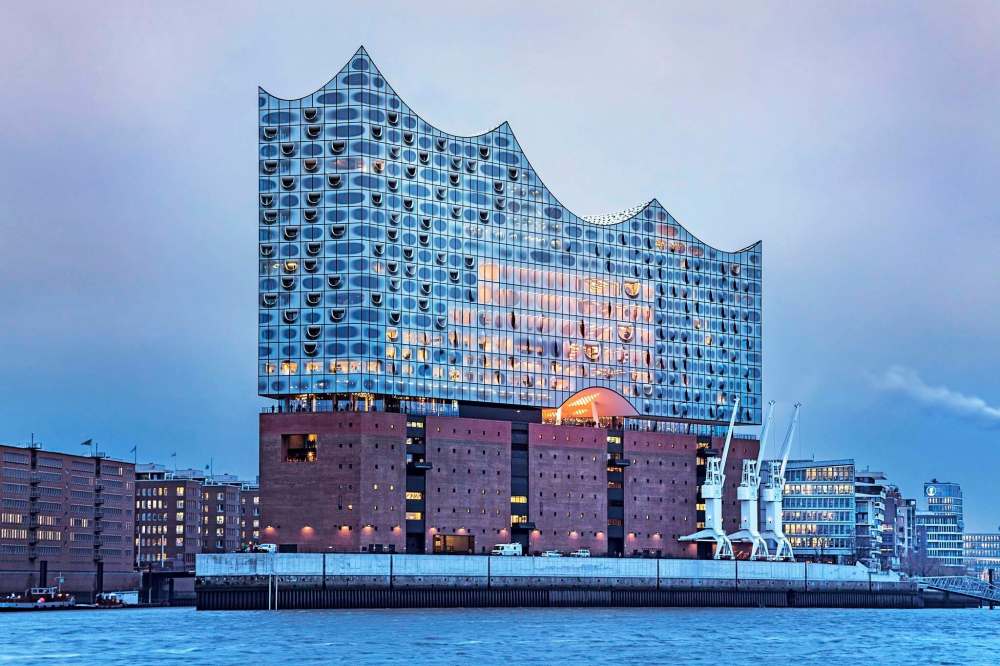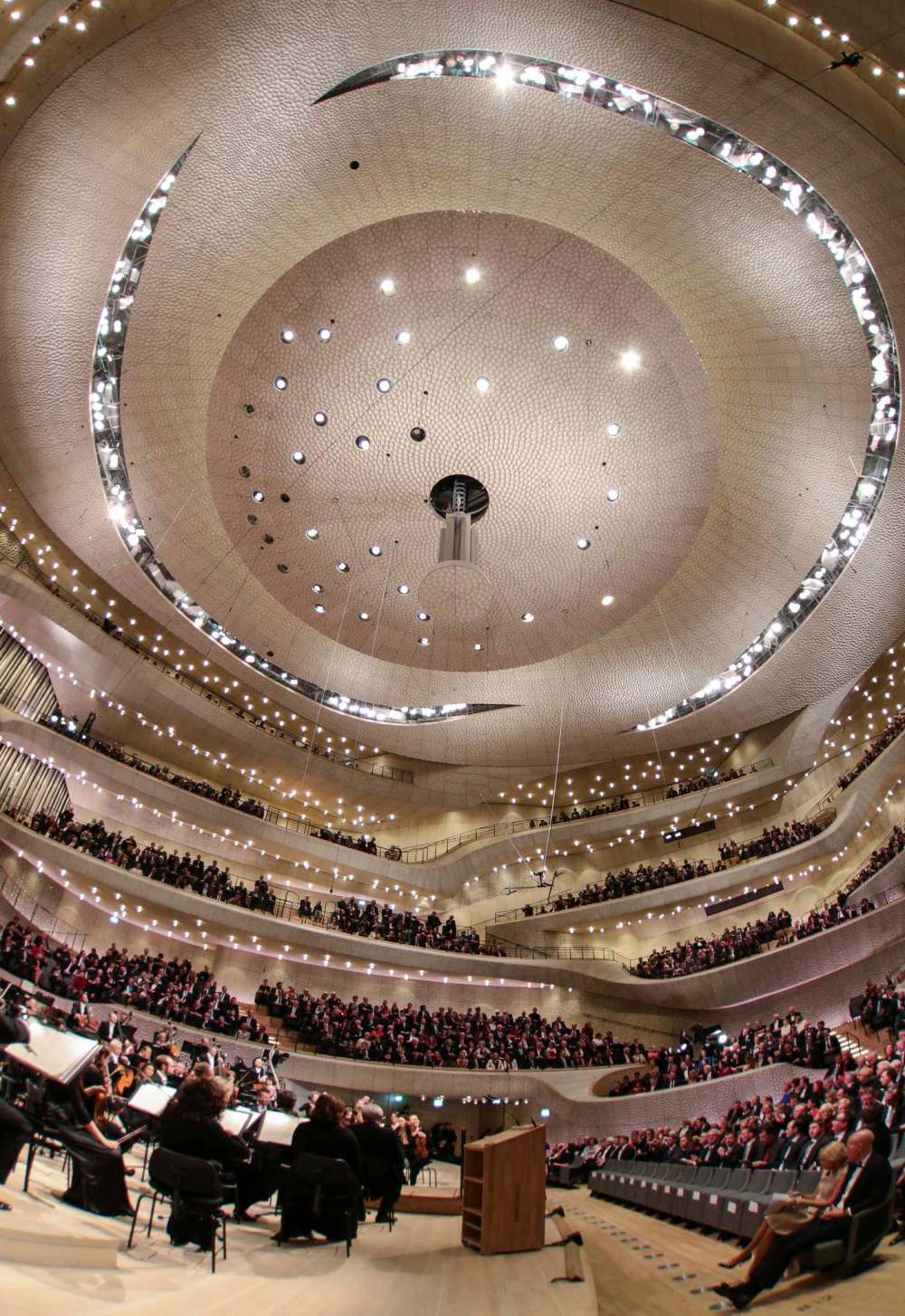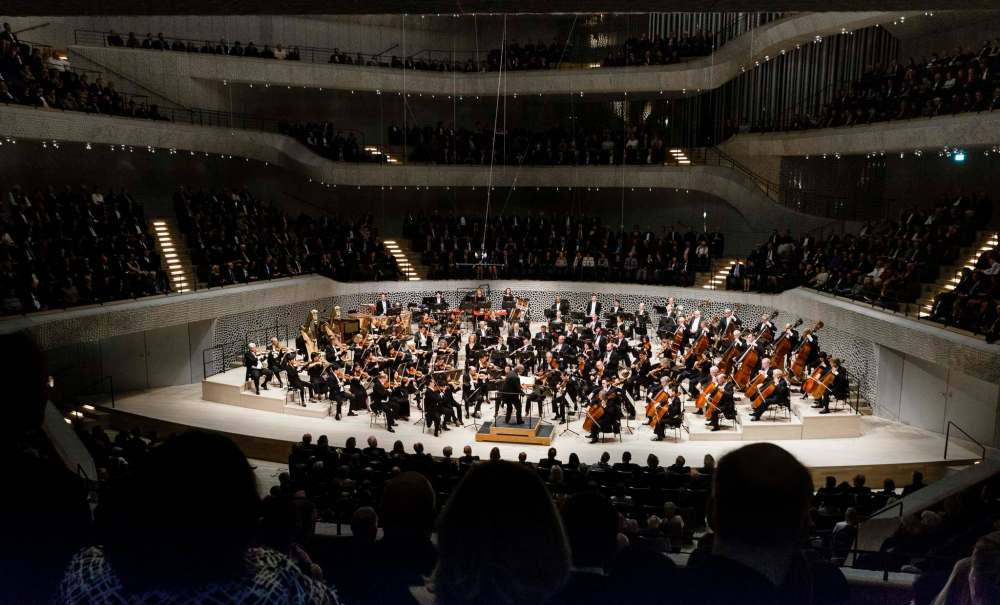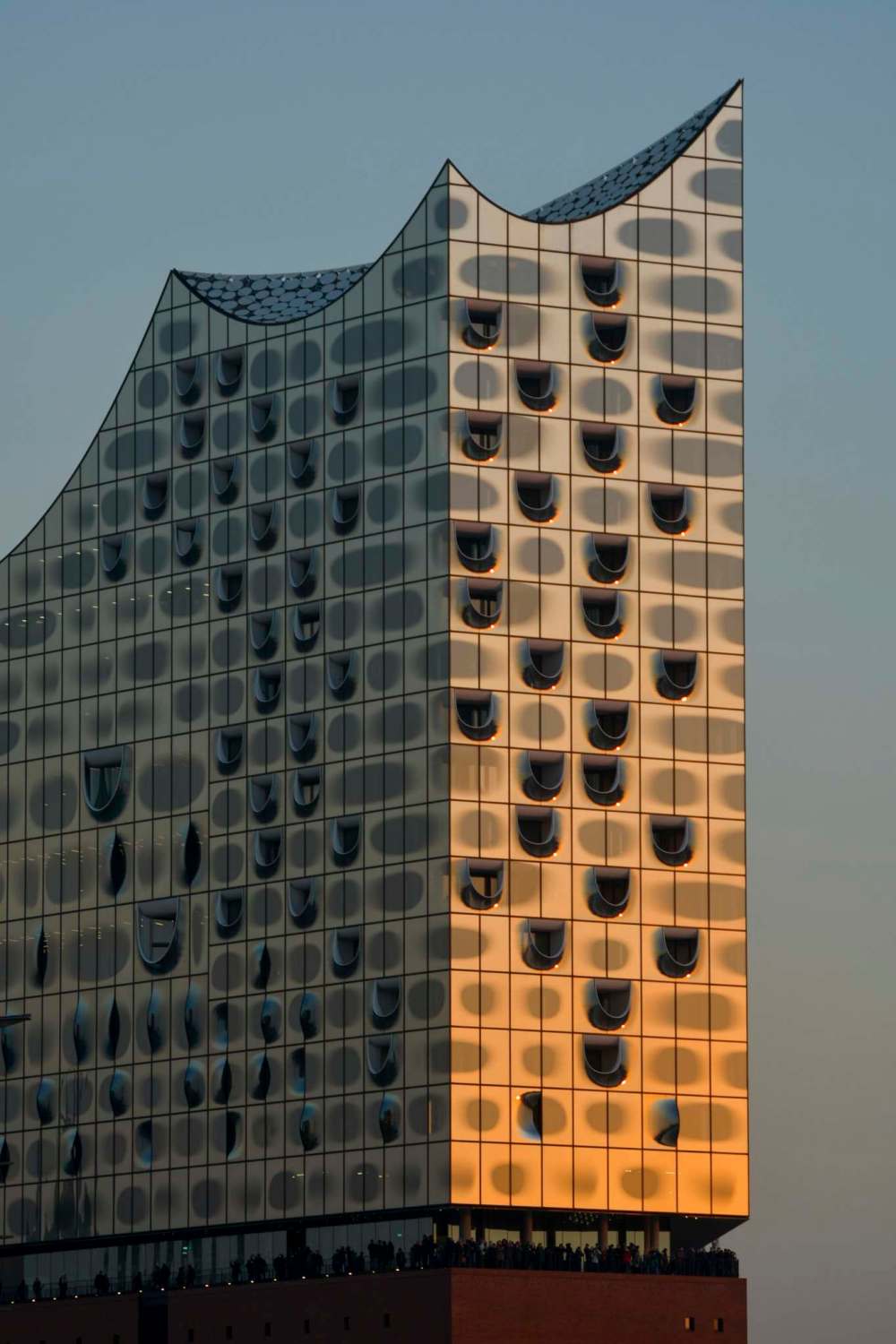Harmony by design
The pricey Elbphilharmonie in Hamburg has even its critics applauding
Advertisement
Read this article for free:
or
Already have an account? Log in here »
To continue reading, please subscribe:
Monthly Digital Subscription
$1 per week for 24 weeks*
- Enjoy unlimited reading on winnipegfreepress.com
- Read the E-Edition, our digital replica newspaper
- Access News Break, our award-winning app
- Play interactive puzzles
*Billed as $4 plus GST every four weeks. Offer only available to new and qualified returning subscribers. Cancel any time.
Read unlimited articles for free today:
or
Already have an account? Log in here »
Hey there, time traveller!
This article was published 20/05/2017 (2845 days ago), so information in it may no longer be current.
The Elbphilharmonie, a concert hall in Hamburg encased in glass and set upon a giant brick warehouse, is surrounded on three sides by the waters of the city’s bustling harbour.

Designed by the Swiss architecture firm Herzog and de Meuron, the building cost about US$850 million, took more than a decade to design and build, and was for a long time cited as a joke — a dark joke — among Germans who fretted the project had become an albatross: unbuildable, over budget and wildly out of proportion to what the sensible people of this mercantile city needed.
But the building, one of several projects around the world which aim self-consciously for “iconic” status and have price tags in the billion-dollar range, opened to international acclaim on Jan. 11.
The acoustics, designed by the renowned Japanese acoustician Yasuhisa Toyota, are a marvel of clarity, precision and cool objectivity. Visitors enjoy stunning views of the industrial grit of Hamburg, renewing the city’s relation to the source of its wealth and its cultural window on the larger world. Tourists flock to ascend the Elphie’s long escalator, rising through the old warehouse in a tunnel of white glass and plaster to visit the rooftop terrace, which bustles with activity before and long after evening concerts.

“Demand is overwhelming,” says Christoph Lieben-Seutter, general director of the Elbphilharmonie. Subscriptions for classical concerts have doubled since the hall opened, tour operators are pressuring the organization to make more tickets available and more than 1.5 million people have visited the public plaza since it opened last November.

The building has become a phenomenon throughout the country. “Music isn’t just the talk of the town, it is the talk of Germany,” Lieben-Seutter says.
In March, the Caracas-based Simon Bolivar Symphony Orchestra played all nine Beethoven symphonies at the new hall. At the end of the third movement from Symphony No. 5,where the first violins seem to get stuck dithering a scattered reminiscence of the main theme, there is one of the most famous crescendos in the history of music, a swelling and triumphant transition from darkness to light.
The sound in the hall was so accurate that if you closed your eyes, you could point to exactly the spot where the timpani player was gently thumping his drums. And as the winds joined the strings, each addition to the burgeoning chord was like another colour being added to the spectrum until the light was brilliant and white.
Those eight bars could stand for the astonishing shift in public perceptions about the building, “from a scandal to a world wonder,” as Lieben-Seutter puts it.
Two decades after a Frank Gehry-designed outpost of the Guggenheim Museum opened in Bilbao, Spain, the idea that a building can transform a city, or a cultural institution, isn’t held in high repute anymore. Debt and disillusion have made the “Bilbao effect” seem a hollow promise of a different age.
Here it is, back again, and it’s imperative to know why it is working. Why this building? What about its design, its location and the implicit social messages embedded in its architecture have made it so successful?

Carsten Brosda, a senator in Hamburg’s state government and head of its cultural authority, says location is a primary factor in its success. “I was never a fan of iconic buildings because so many of them are rather generic,” he says.
But Elbphilharmonie is exceptional, located in the geographical heart of the city, on a site that demanded some exceptional public use. “There were architects saying this is on the verge of being unbuildable, but that is what makes it unique.”

But it is the architecture — the way it floats like a giant ship above the old brick factory, the drama of how one enters and moves through its spaces, and the way it situates people in relation to each other in the soaring auditorium — that makes it truly extraordinary.
Its shape was first adumbrated by Jacques Herzog, a principal of the firm that became world famous for the “Bird’s Nest” stadium at the 2008 Beijing Summer Olympics. Herzog supposedly scribbled a wavy form on top of a picture of the old, 1960s-era Kaispeicher A warehouse and the idea quickly became embedded in Hamburg’s civic consciousness.
“Everybody was basically nuts about this,” Brosda says. The project is part of a major multibillion-dollar redevelopment of Hamburg’s harbour, converting 19th-century brick buildings and empty lots into residential, office and commercial space. But a concert hall atop an old factory was counterintuitive.
The constrained and irregularly shaped floor plate of the warehouse meant that the auditorium, above, would be abnormally vertical in its layout. And placing it so high above the ground meant that street life, so important to most urban developments, would need to be sucked up into the sky and redistributed on the terrace some eight floors above.
Entry to the concert spaces — which include the 2,100-seat main hall and a 572-seat recital hall — is accessed up a curving flight of wooden steps. When the building is open for performances, the visitor encounters no doors; the path up the steps leads directly into the lobby areas, which flow uninterrupted into the auditorium. The seating is in the round, or “vineyard” style, with the audience arrayed close to the stage in a set of shallow, interconnecting balconies.
Often, architects and critics stress the “democratic” or egalitarian virtues of vineyard-style seating, though the peculiar height of the Elbphilharmonie makes the lower seats, closest to the orchestra, more equal than others, especially the highest ones, which can inspire vertigo. It’s not a democratic seating plan with all seats being equal, but it is one that fosters an exciting sense of community during performances.

“This is a house for everybody,” says Ascan Mergenthaler, the senior partner at Herzog and de Meuron in charge of the project. But this was clearly a hall designed for, and intended to elevate (literally and symbolically), the experience of classical music.
Brosda says one reason the building has been so quickly embraced despite the huge cost overruns is that it reaffirms values essential to Germany. “Questions of culture become more and more important today. It is a statement by a free and open society.”
And that may be the last and most important reason that this hall could revive, at least once and perhaps only here, the “Bilbao effect,” transforming a place, or an art form, or cultural attitudes through architecture.
The design of this building takes the idea of listening to serious music seriously, it posits the experience as an event to be relished, and it celebrates a species of aural attention that is in danger of extinction: collective, attentive, in communion with the musicians and the audience alike.
This building, high above the city and its industrial waterfront, suggests music can still stop time for a few hours and extinguish the triviality of the world, seen for a while only as a blur of lights, twinkling in the distance and reflected on the turbid water far below.
— Washington Post


